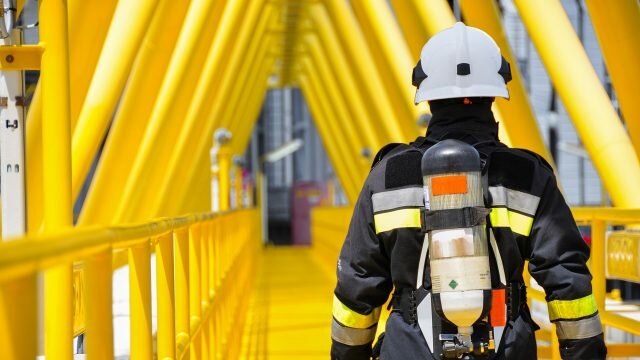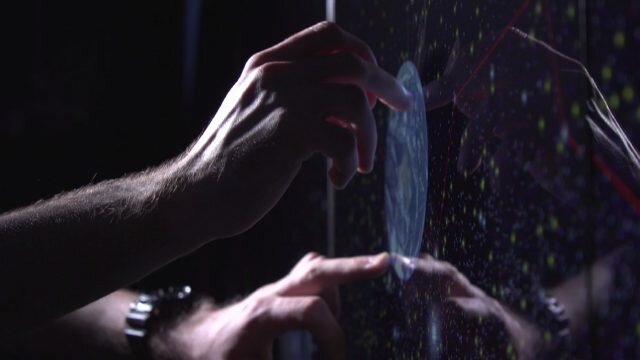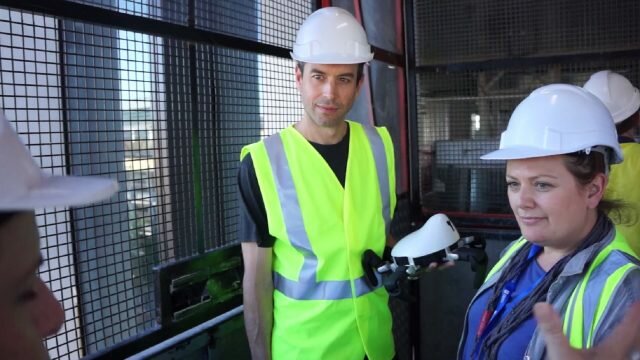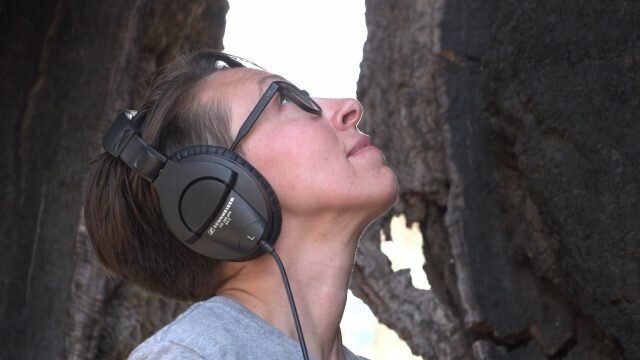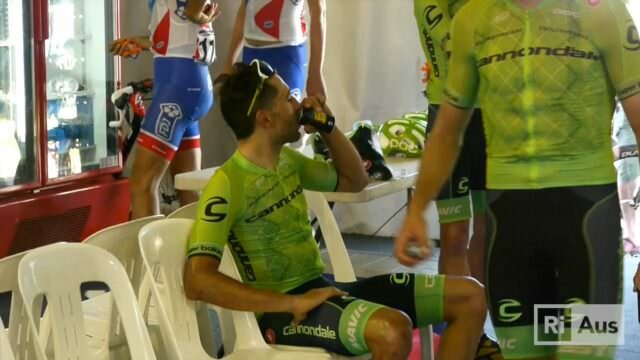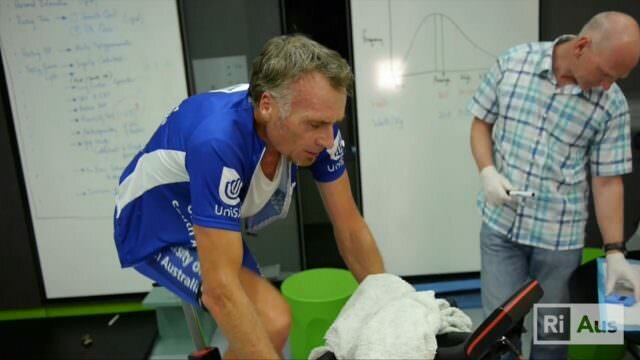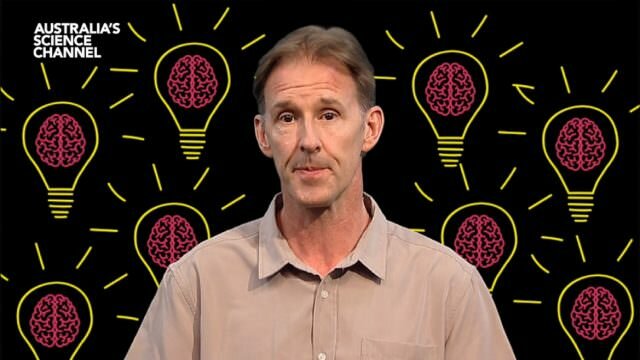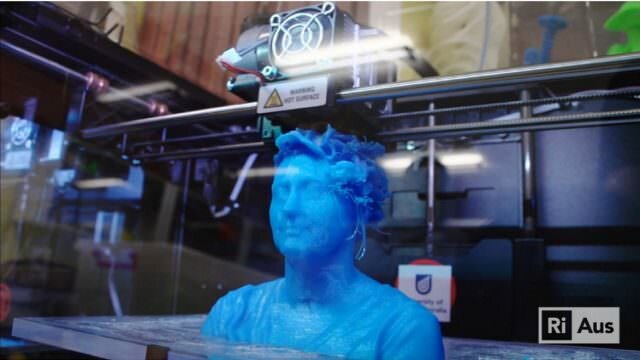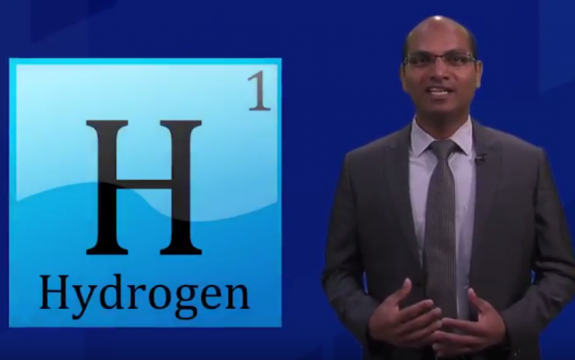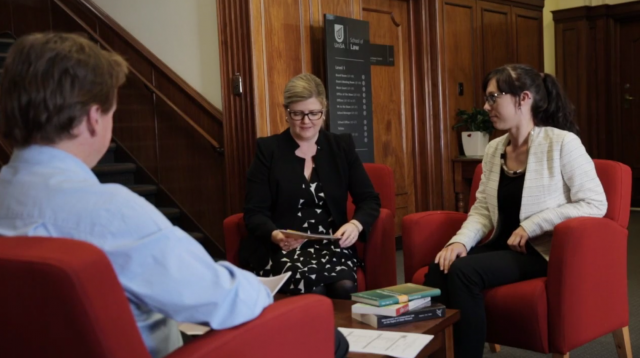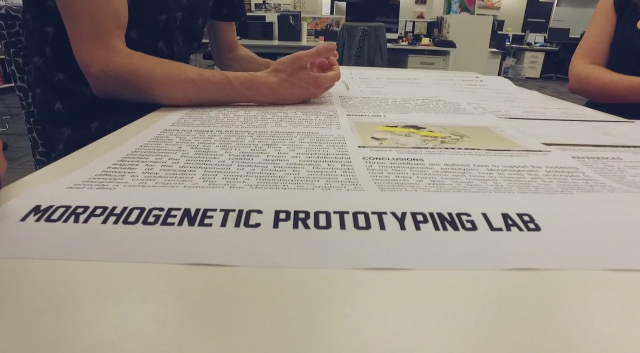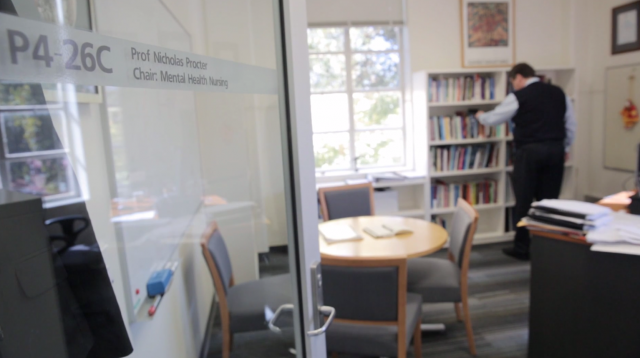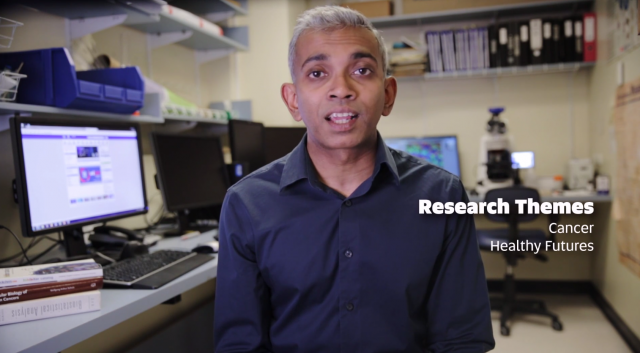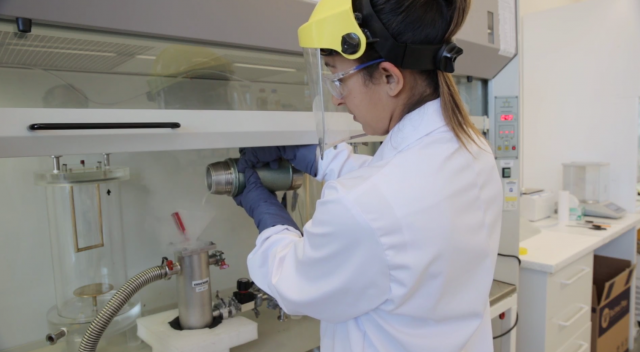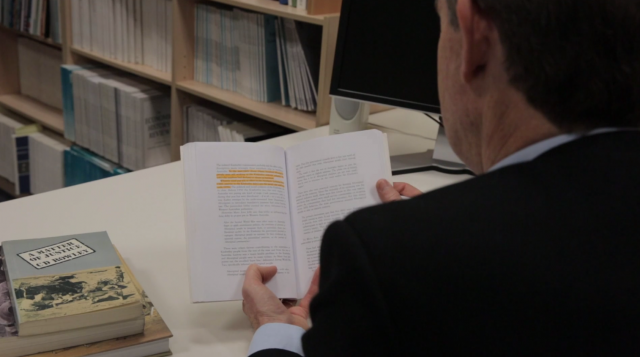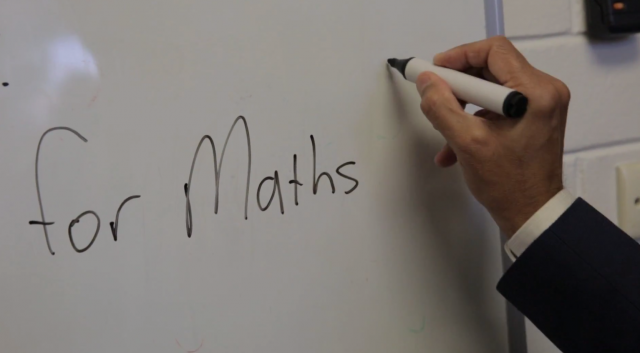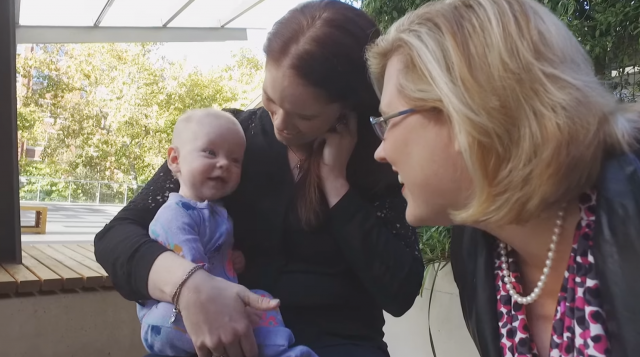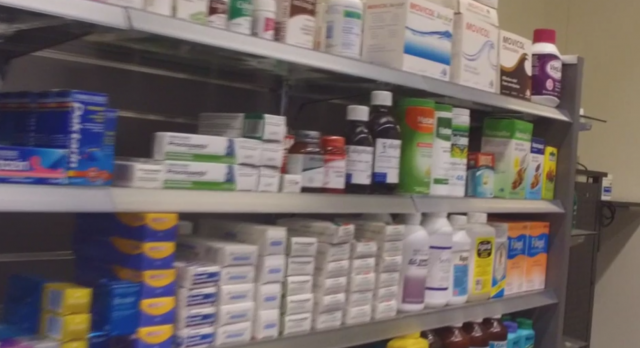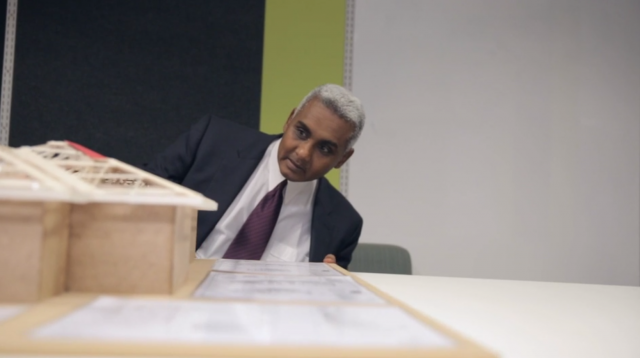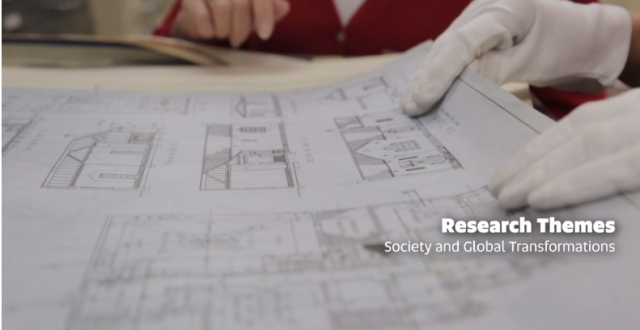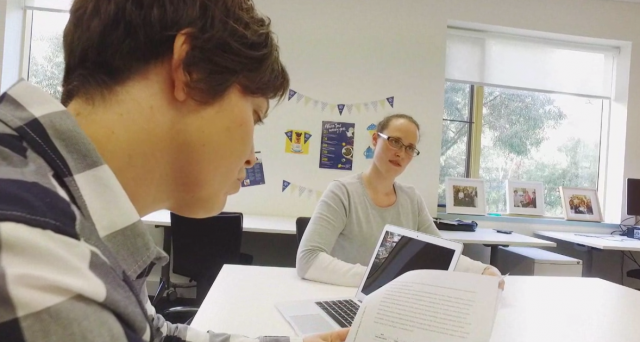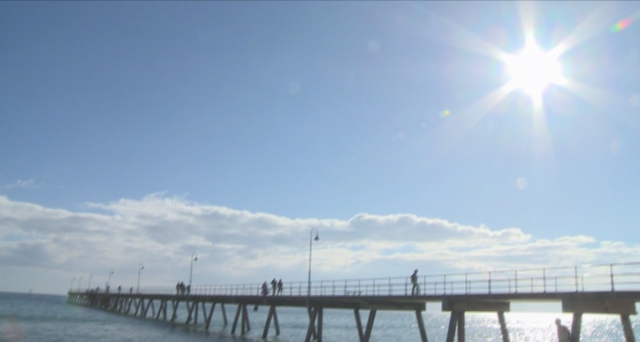Last updated June 18, 2018 at 10:29 am
There’s a range of ways households can reduce their energy bills, as well as new technologies that will allow Australia to capture and store energy from the sun more efficiently. UniSA researchers are working on both sides of the equation.
The molten salt receiver, along with the collector field control systems by SolarReserve.
Solar thermal power provides both energy generation as well as bulk energy storage at a competitive price. Photo courtesy SolarReserve
Traditionally molten salts are used to store the heat generated by concentrated solar power.
The salt is heated above its melting point (typically around 220°C) to more than 500°C. With proper insulation it can be stored for up to a week, and can be pumped to a traditional turbine/generator to produce electricity when needed. UniSA is working on the next generation of heat storage technology, which makes use of the large amount of heat captured and stored in salts as part of the process of melting it. These materials are known as phase change materials. Water is such a material, which ‘stores cooling’ at 0°C, turning to ice when heat is removed. The major advantages of this technology are that for the amount of energy it can store, it is relatively cheap and compact.
Current solar thermal power plants store heat at up to about 550°C.
“But the next generation of solar thermal power is going to go much higher, with temperatures up to 900°C, which is much more efficient,” Prof Bruno says.
Heliostats (like the one pictured) follow the sun throughout the day – concentrating the sunlight onto a central tower. Photo courtesy SolarReserve
Earlier this year, UniSA opened a High Temperature Testing Facility, which can test the thermal characteristics of systems requiring a heat source at those higher temperatures.
In addition to the value of using thermal storage to supply electricity on demand, it can also be used to provide heating or cooling on site. UniSA is working on a range of ways to make use of phase change technology. In the not too distant future, this technology could be built into air conditioning systems: storing the cool evening air for reuse on hot days; and storing day-time heat to warm homes at night.
Prof Bruno says the increasing price of electricity, particularly through gas generation, is making renewable energies much more cost-competitive.
Reducing energy use
One of the big challenges for Australians is that they have become accustomed to oversized air-conditioning. This has contributed to South Australia’s high power prices – and to sky-rocketing bills for consumers.
“There’s an expectation that when it’s 44°C people can cool their homes to 15°C, but that’s well beyond what’s actually needed to stay comfortable,” Prof Bruno says.
“Every additional refrigerated air-conditioning unit installed in an Australian home, increases the cost to the electricity grid by about $5000 to $10,000. The increased costs to the grid are ultimately passed onto users.
“Our peak electricity use generally occurs on hot summer days and is mostly attributable to air-conditioning, and to a lesser extent, refrigeration. If we can increase the efficiency of air-conditioning, then we will require less power infrastructure, leading to lower costs.”
If you provide good insulation and an energy-efficient air-conditioning system matched to the size of the house, you can reduce energy use in peak times by up to two-thirds.
This has been demonstrated and measured by UniSA researchers at Lochiel Park, where all homes have solar-heated hot water, solar photovoltaic systems on the roof and stringent energy efficiency requirements for all appliances.
Residents can monitor their electricity, gas and water use minute-by-minute, which helps them make decisions about which appliances to use – or to switch off.
Prof Saman says households can reduce their power bills by up to 50 per cent while maintaining most of their creature comforts.
“We have got the biggest source of data in the world for energy consumption, covering 100 homes for about six years,” he says. “We can show very clearly that these homes use about one-third of the energy of the typical Australian home. Not only do a lot of them have $0 in bills, but people find their homes a lot more comfortable to live in.
“We have to start by looking at where our energy is going and try to reduce it before looking at our power supply and storage.”
The blame game – South Australia’s blackout
“There’s been a lot of blame put on renewable energy which is completely unjustified. All the studies have shown renewable energy was not the cause of the SA blackouts in September 2016. It was a weather event with lots of electricity towers blown down. But some politicians have been quick to blame renewable energy.”
Prof Saman says the data clearly shows the main reasons for high electricity costs are the money spent on the electricity grid, “the poles and wires”, by electricity providers, “which accounts for about half the cost we are paying”, and the rising cost of gas.
“Analysis shows renewables have had a very small part in the problem of high electricity costs.
“We should be building net zero energy and zero carbon buildings – which means effectively no power bills. The technology for this already exists and could apply to all single and two-storey buildings.
“Homes can still be connected to the power grid, as some people will use more and some people less energy, balancing use out, but the opportunity is there right now. In Australia our solar resource is so plentiful we can do this without having to pay unnecessarily for power.”
UniSA is part of a national research and innovation hub for low energy use, the Cooperative Research Centre for Low Carbon Living, which is revising the national energy rating tool (how many stars a home gets for energy efficiency) to bring it into the 21st century. The current energy tool doesn’t show how much money can be saved based on the energy rating of a home.
Prof Saman says the current energy rating tools only cover 30 per cent of a home’s overall energy consumption – essentially the ‘shell’ of the house, and the heating and cooling.
Current home energy rating tools are focused on heating and cooling.
“Savings depend on how people use the home, rather than just the home itself – so you need to look at better technology combined with better behaviour by giving people simple tools to see their energy use, and hopefully adjust their behaviour.
“Over time, our use of devices – and the fact we have more devices than ever – is contributing to increasing energy use, representing a growing proportion of total energy use.”
Technology to store heating or cooling for later use in the home, is also applicable in industry.
UniSA developed a commercial system with Glaciem Cooling Technologies using phase change materials for industrial refrigeration, using electricity which is stored as a cold material when electricity is cheap; and then releasing the energy for refrigeration when energy prices are high.
For example, supermarkets can use electricity to create ice when energy prices are low. The ice is kept in an insulated box and can provide the supermarket’s refrigeration needs when electricity prices are high.
Prof Bruno says the decreasing price of solar PV means that at some point in the future, there will be times when electricity is effectively free during the day – the ideal time to store energy in a storage system. Combined with more efficient air-conditioning, homes will be able to produce more energy than they consume.
He says renewable energy, combined with energy storage technology, should drive down electricity prices in the long run.

